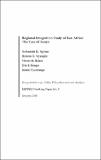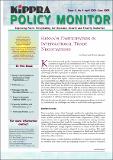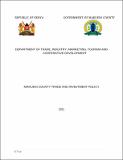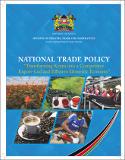| dc.date.accessioned | 2021-01-18T09:36:45Z | |
| dc.date.available | 2021-01-18T09:36:45Z | |
| dc.date.issued | 2003 | |
| dc.identifier.uri | http://repository.kippra.or.ke/handle/123456789/2567 | |
| dc.description.abstract | This study evaluates the costs and benefits of the East African Community Customs Union to Kenya. In particular, the study assesses the potential impact (to Kenya) of removing tariffs on intra-EAC trade and establishing a common external tariff for the Community. This assessment is restricted to simulation of the government tariff revenue implications of the implementation of the customs unions agreement. However, the study also analyses views of stakeholders on the current or expected impacts of the EAC customs union. Past efforts to form regional integration schemes in Africa failed because of political and economic factors, which did not favour sustainability of the schemes. However, in recent years, a new momentum of integration has emerged in the continent with the revival of the EAC in 1993 being indicative of that momentum. A number of factors explain this new emphasis on integration including: greater political will, globalisation and the attendant need to strengthen small economies and expand markets to avoid marginalisation, and the desire to achieve economic development. | en |
| dc.language.iso | en | en |
| dc.publisher | The Kenya Institute for Public Policy Research and Analysis (KIPPRA) | en |
| dc.relation.ispartofseries | WP/09/2003; | |
| dc.subject | Regional Integration | en |
| dc.subject | Trade Liberalization | en |
| dc.subject | Trade Patterns | en |
| dc.subject | Trading Enterprises | en |
| dc.subject | Clearing and Forwarding | en |
| dc.title | Working Paper No. 09 of 2003 on Regional Integration Study of East Africa: The Case of Kenya | en |
| dc.type | KIPPRA Publications | en |
| ppr.contributor.author | Ng'eno, Nehemiah K. ; Nyangito, Hezron O. & Ikiara, Moses, M. | en |




